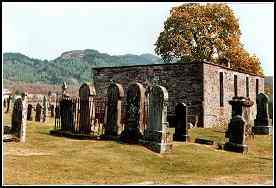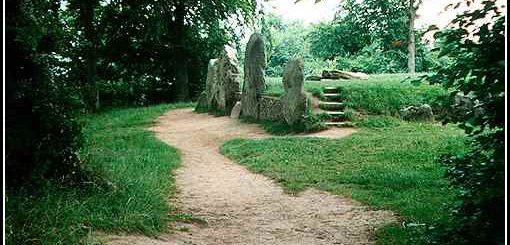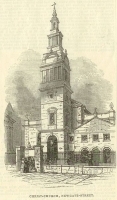Kilmartin Linear Cemetery
The Kilmartin Valley is home to one of the most varied collections of prehistoric sites in the whole of Scotland. Bronze Age cairns, Neolithic chambered tombs, and enigmatic rock carvings, can all be found within a two-mile radius from Kilmartin village.
 Further South is Dunadd, the Dark Age fortress once home to the people after whom Scotland was named. The most easily accessible group of sites form the Kilmartin Linear Cemetery, a collection of Bronze Age cairns, all of which can be reached on foot from the museum at Kilmartin House.
Further South is Dunadd, the Dark Age fortress once home to the people after whom Scotland was named. The most easily accessible group of sites form the Kilmartin Linear Cemetery, a collection of Bronze Age cairns, all of which can be reached on foot from the museum at Kilmartin House.
The linear cemetery consists of five cairns dating from the Bronze Age, some of which overlay older sites. Intermingled with these are Temple Wood Stone circle, and Nether Largie standing stones.
Glebe Cairn is the first cairn in the group, which is thought to date from around 1700 BC. The cairn now consists of a pile of jumbled pebbles, which has lost much of its grandeur, even since 1864, when it was recorded as having been over 4 metres in height. The cairn was excavated in the mid 18th century when two stone cists were discovered along with a fine quality jet necklace.
Nether Largie North Cairn is more complete than Glebe cairn and has been rebuilt to allow access into the tomb through the top of the cairn. A modern square room allows viewing of the stone cist – which contained the burial – along with the huge capstone covered with cup markings. The cairn was excavated in 1930, when a human tooth, charcoal and ochre were discovered.
Nether Largie Mid Cairn was found to contain two cists when excavated in 1929, very little of its former structure remains, due to stones being removed for building purposes over the centuries.
 Nether Largie South Cairn is probably the most interesting cairn within the group, it dates from a much earlier period – around 3000 BC – and is the only chambered cairn along the alignment. This type of cairn, with its long covered chamber, was most likely used over a long period of time to receive generations of burials. During the Bronze Age this chambered tomb was incorporated into the alignment, and used again for burial. A stone cist from this period is still visible on the edge of the monument.
Nether Largie South Cairn is probably the most interesting cairn within the group, it dates from a much earlier period – around 3000 BC – and is the only chambered cairn along the alignment. This type of cairn, with its long covered chamber, was most likely used over a long period of time to receive generations of burials. During the Bronze Age this chambered tomb was incorporated into the alignment, and used again for burial. A stone cist from this period is still visible on the edge of the monument.
Ri Cruin Cairn has been extensively reconstructed after excavations at the site when three stone cists were discovered.
 Temple Wood Stone Circles date from around 3500BC, when the first circle was constructed, which is thought to have had some orientation towards solar events. This circle was then succeeded by a circle of stones, which are still visible today. The cist in the centre of the circle is a later addition from the Bronze Age. The site had continuous usage up until 1400 BC.
Temple Wood Stone Circles date from around 3500BC, when the first circle was constructed, which is thought to have had some orientation towards solar events. This circle was then succeeded by a circle of stones, which are still visible today. The cist in the centre of the circle is a later addition from the Bronze Age. The site had continuous usage up until 1400 BC.
 Nether Largie Standing Stones are thought by some to have been part of a lunar observatory. The site consists of a tall central stone – covered with cup and ring markings – with two pairs of outlying stones to the South and West.
Nether Largie Standing Stones are thought by some to have been part of a lunar observatory. The site consists of a tall central stone – covered with cup and ring markings – with two pairs of outlying stones to the South and West.
There are many more sites within the Kilmartin area, all of which are well worth exploring in more detail, although some are not open to the public.
British Archaeology, Issue 64, April 2002 stated – “An early Bronze Age timber circle containing an inner ring of totem poles set around a deep, scred pool is thought to have once stood at the head of the Kilmartin Valley…..Around this pool was an inner ring of post-holes, thought to have once held totems. At the base of one was a cremation burial under a stone. From the outer ring of 30 oak posts, some 47 meters in diameter, a timber-lined processional avenue appears to have snaked down to the valley floor.”
Map References: Glebe Cairn: NR 833 989, Nether Largie North: NR 830 984, Nether Largie South: NR829 979, Temple Wood Stone Circles: NR 829 978.
Directions: Kilmartin is reached from the A816 from Lochgilphead or Oban, there is parking at the museum at the centre of the village, where all the sites described above can be accessed by an hour walk.




Re: Kilmartin Linear Cemetery
This whole area is truly a wonderful atmospheric Prehistoric Gem and one could say the beginnings of Scotland’s turbulent history. Wonderful walks through a beautiful landscape,including the Iron Age fort of Dunadd one of Scotland’s most important sites that became a Royal Seat where it is reputed that the Stone of Destiny had its origins. A visit to Kilmartin House is useful for a full explanation to the area and its collections. I was lucky enough to purchase the CD The Kilmartin Sessions, recreated Ancient Sounds of Scotland.
The nearby Kilmartin Church is worth a visit to view the Medival Grave slabs of the Malcolms of Poltalloch.
Those who would like to base themselves in the area and be spoilt then look no further than the fabulously situated Crinan Hotel. http://www.crinanhotel.com After a days walking, the food and service is second to none. Highly Recommended.
Believe me a real Gem of an area.
Cheers.